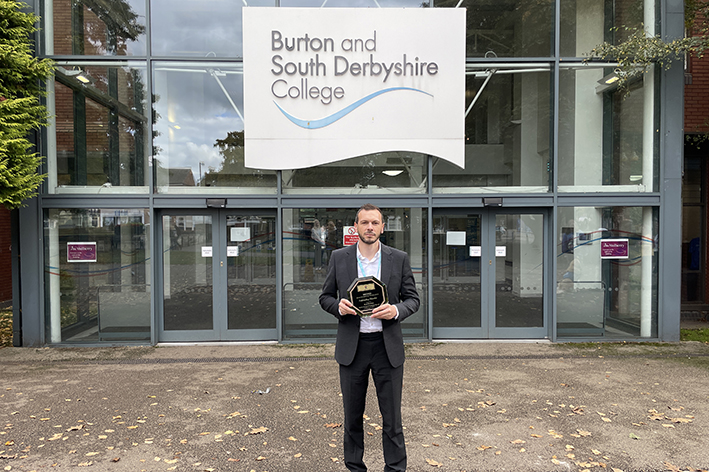Healthcare cleaning operative

KSBs
Knowledge
K1: National and local standards, policies, guidelines and procedures which could include:• manual handling • use of Personal Protective Equipment (PPE)• the NHS cleaning specification • waste disposal • safeguarding and data protection Back to Duty
K2: How to manage risk (i.e. follow out risk assessments, risk categories and colour coding) and identify when there is a need for change from routine to enhanced cleaning protocols in line with the Local and National standards and polices. Back to Duty
K3: Preparation for cleaning methodologies and techniques Back to Duty
K4: Chemical competence to include dilution ratios and Control of Substances Hazardous to Health (COSHH) Back to Duty
K5: Selection and use of correct cleaning equipment and machinery for a range of routine and specialist cleans (e.g. hard floors, clinical areas, communal areas, dining areas) including cleaning of equipment after use and principles of PAT testing to ensure safe to use Back to Duty
K6: The roles and responsibilities in relation to Standard Operating Procedures (SOPs) (e.g. schedules of work, recording of completed tasks, fault reporting and stock recording / ordering) Back to Duty
K7: The principles of infection prevention control and how these apply to the role. For example:• segregation of waste types • the correct identification and use of a range of waste storage containers (sacks and bags) • the safe disposal of waste and spent solutions, • the cleaning of rooms where a patient is being barrier nursed. • compliance with the cleaning and disinfecting policy as well as colour coding Back to Duty
K8: How to recognise the signs of pest infestation and the methods to deal with each e.g. rodents, cockroach, insects & pigeon waste. How to report according to local procedures and work with partners to eradicate them in line with local and national standards and policies. Back to Duty
K9: How to respond to different rapid response cleans e.g. bodily fluid, chemical spillage, hazardous waste Back to Duty
K10: The principles of scheduled and periodic cleaning, prioritisation of work and the escalation process Back to Duty
K11: Types of cleaning and the difference between disinfection and cleaning to include: • terminal cleans• barrier cleans• isolation cleans• discharge cleans • decontamination cleans Back to Duty
K12: The principles of personal hygiene and the implications for the role i.e. clean uniform, hand hygiene and cross contamination)) for example;• use of PPE • the bare below the elbow process, • hand hygiene requirements. Back to Duty
K13: How to assemble and disassemble a range of service user equipment for cleaning (e.g. hospital beds, trolleys and trays) Back to Duty
K14: Soil classification/contaminating material and removal methods to include: • organic soiling• inorganic soiling • microbiological residues Back to Duty
K15: Housekeeping of storage areas best practice, techniques and implications to include:• stock rotation • ordering of materials• optimum storage environment for chemicals and machinery Back to Duty
K16: Security of cleaning equipment and materials, reasons and implications Back to Duty
K17: Communication techniques which could include:• conflict management• dealing with patients with dementia • dealing with very young patients Back to Duty
K18: The principles of Equality & Diversity, the importance of culture awareness and implications for the role. e.g. age, race, religion, disability, those with dementia) Back to Duty
K19: Importance of portraying a positive corporate image (e.g. customer service, smart appearance) Back to Duty
Skills
S1: Comply with National and local standards, policies, guidelines and procedures to include:• manual handling, • use of PPE, • the NHS cleaning specification, • waste disposal, • safeguarding and data protection• the correct identification and use of a range of waste storage containers (sacks and bags) • the safe disposal of waste and spent solutions• compliance with the cleaning and disinfecting policy as well as colour coding Back to Duty
S2: Carry out risk assessments Back to Duty
S3: Identify risk categories and colour coding correctly in order to carry out cleaning appropriately Back to Duty
S4: Prepare cleaning materials and machinery appropriate to the task Back to Duty
S5: Select the correct chemicals for the task considering COSHH and using correct dilution rates and applicable data sheets Back to Duty
S6: Select and use correct cleaning equipment (fogging machine, floor machines) and equipment for a range of routine and specialist cleans (e.g. hard floors, clinical areas, communal areas, pool side, mortuary, operating theatres) including cleaning of equipment after use and applies principles of PAT testing to ensure equipment is safe to use. Back to Duty
S7: Carry out tasks according to Standard Operating Procedures (SOPs) (e.g. schedules of work, recording of completed tasks, fault reporting, stock recording / ordering) Back to Duty
S8: Recognise the signs of infestation and follow organisational procedures to appropriately address and eradicate the problem. e.g. rodents, insects, cockroach & pigeon waste, report according to local procedures and work with partners to eradicate them in line with local and national standards and policies. Back to Duty
S9: Carry out tasks to the appropriate standard to ensure infection prevention and control. For example the cleaning of rooms where a patient is being barrier nursed. Back to Duty
S10: Carry out different rapid response cleans (e.g. bodily fluid, chemical spillage, hazardous waste) Back to Duty
S11: Carry out scheduled and periodic cleaning, prioritising work where required Back to Duty
S12: Carry out a range of cleaning and disinfection tasks to include: • terminal cleans • barrier cleans • isolation cleans • discharge cleans • decontamination cleans Back to Duty
S13: Apply the principles of hygiene to the role (i.e. clean uniform, hand hygiene and cross contamination). Appropriately use PPE and apply the bare below the elbow process. Back to Duty
S14: Assemble and disassemble a range of service user equipment for cleaning (e.g. hospital beds, trolleys and trays) Back to Duty
S15: Demonstrate housekeeping of storage areas best practice, techniques and implications to include stock rotation, ordering of materials, optimum storage environment (temperature, humidity, ventilation) for chemicals and machinery. Back to Duty
S16: Ensure the security of cleaning equipment and materials Back to Duty
S17: Classify soils/contaminating matter correctly and apply the most appropriate removal methods which could include: • organic soiling,• inorganic soiling • microbiological residues Back to Duty
S18: Communicate with colleagues, patients and their families professionally Back to Duty
S19: Apply the principles of Equality & Diversity at all times being culturally aware and adapting tasks to suit the needs of the patient (e.g. age, race, religion, disability, those with dementia) Back to Duty
S20: Portray a positive Corporate image (e.g. customer service, smart appearance) Back to Duty
Behaviors
B1: Dignity, respect and professionalism Back to Duty
B2: Working independently and as part of a team; having the courage to challenge areas of concern and working to evidence based best practice Back to Duty
B3: Reliability and consistency, taking responsibility for the integrity of your own actions and completed work Back to Duty
B4: Time management and ability to complete work to schedule Back to Duty
B5: A flexible approach to your work when required Back to Duty
B6: Analytical thinker and problem solver Back to Duty











Responses